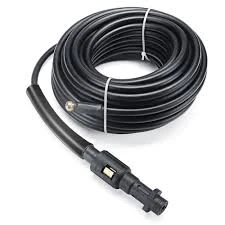power steering low pressure hose leak
Understanding and Addressing Power Steering Low Pressure Hose Leaks
Power steering is an essential component of modern vehicles, providing the necessary force to help steer the wheels with minimal effort. However, like any mechanical system, the power steering system can experience issues over time. One of the more common problems is the leak in the low pressure hose. Understanding why these leaks occur, their signs, and how to address them can help ensure your vehicle remains safe and reliable on the road.
What is the Low Pressure Hose?
In a power steering system, the low pressure hose carries hydraulic fluid from the steering gear back to the reservoir. Unlike the high-pressure hoses, which operate under significant pressure to create the hydraulic force needed for steering, the low pressure hose functions under much lower pressure. While this may seem less critical, a leaking low pressure hose can lead to significant issues in the steering mechanism if not addressed promptly.
Signs of a Leak
The symptoms of a low pressure hose leak can be subtle at first, but they tend to worsen if neglected. Here are some common signs that you may have a leaking low pressure hose
1. Fluid Puddles One of the most apparent signs is the presence of power steering fluid puddles under your vehicle. This fluid is typically red or pink and has a distinct oily texture.
2. Steering Difficulty If you notice that your steering feels heavier or more difficult than usual, it may indicate that there is not enough hydraulic fluid in the system due to a leak.
3. Unusual Noises A whining or groaning noise when turning the steering wheel can indicate that the power steering pump is struggling due to low fluid levels, potentially caused by a leak.
4. Warning Light Some vehicles have a power steering warning light on the dashboard. If this light illuminates, it could be a sign that the fluid level is low due to a leak.
Causes of Low Pressure Hose Leaks
Understanding the root cause of low pressure hose leaks can help prevent future issues. Here are some common reasons why these hoses fail
power steering low pressure hose leak

1. Wear and Tear Over time, rubber hoses can degrade due to exposure to heat, cold, and the elements. As the material weakens, it becomes more susceptible to cracking and leaking.
2. Improper Installation If the low pressure hose is not installed correctly, it may rub against other components, leading to wear and potential failure.
3. Corrosion If the hose is exposed to harmful elements like road salt or chemicals, it can corrode, resulting in a leak.
4. Old Age Like any other part of your vehicle, power steering hoses have a lifespan. Regular maintenance can help identify hoses that need to be replaced before they fail.
Addressing the Leak
If you suspect a low pressure hose leak, it’s essential to address it promptly. Here are steps to take
1. Inspect the Hose Look for signs of damage such as cracks, fraying, or fluid pooling beneath the vehicle.
2. Check Fluid Levels Regularly check your power steering fluid levels and top them off if necessary. However, this is only a temporary solution if there is a leak.
3. Consult a Mechanic If you confirm the presence of a leak, it’s best to consult a professional mechanic. They can properly assess the situation, replace the damaged hose, and ensure the entire power steering system is functioning correctly.
Conclusion
Power steering low pressure hose leaks are a common issue in vehicles that can have serious implications if left unaddressed. By understanding the signs, causes, and solutions, you can maintain your vehicle's power steering system effectively. Regular inspections and maintenance can go a long way in preventing these leaks and ensuring a safe driving experience. If you notice any symptoms of a leak, don’t hesitate to seek professional help to keep your vehicle in top shape.
-
Ultimate Spiral Protection for Hoses & CablesNewsJun.26,2025
-
The Ultimate Quick-Connect Solutions for Every NeedNewsJun.26,2025
-
SAE J1401 Brake Hose: Reliable Choice for Safe BrakingNewsJun.26,2025
-
Reliable J2064 A/C Hoses for Real-World Cooling NeedsNewsJun.26,2025
-
Heavy-Duty Sewer Jetting Hoses Built to LastNewsJun.26,2025
-
Fix Power Steering Tube Leaks Fast – Durable & Affordable SolutionNewsJun.26,2025

